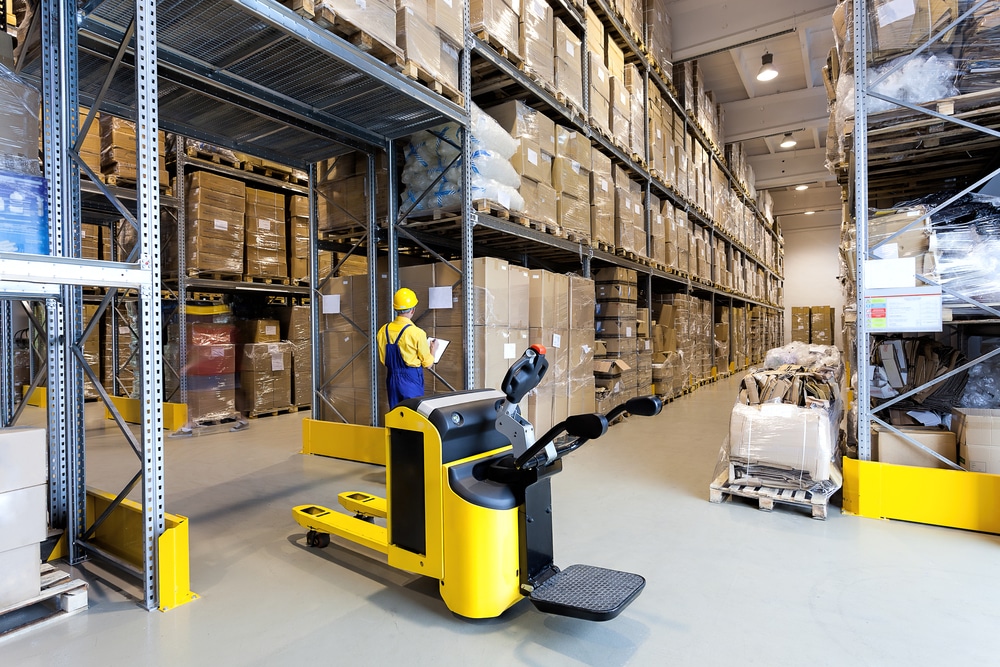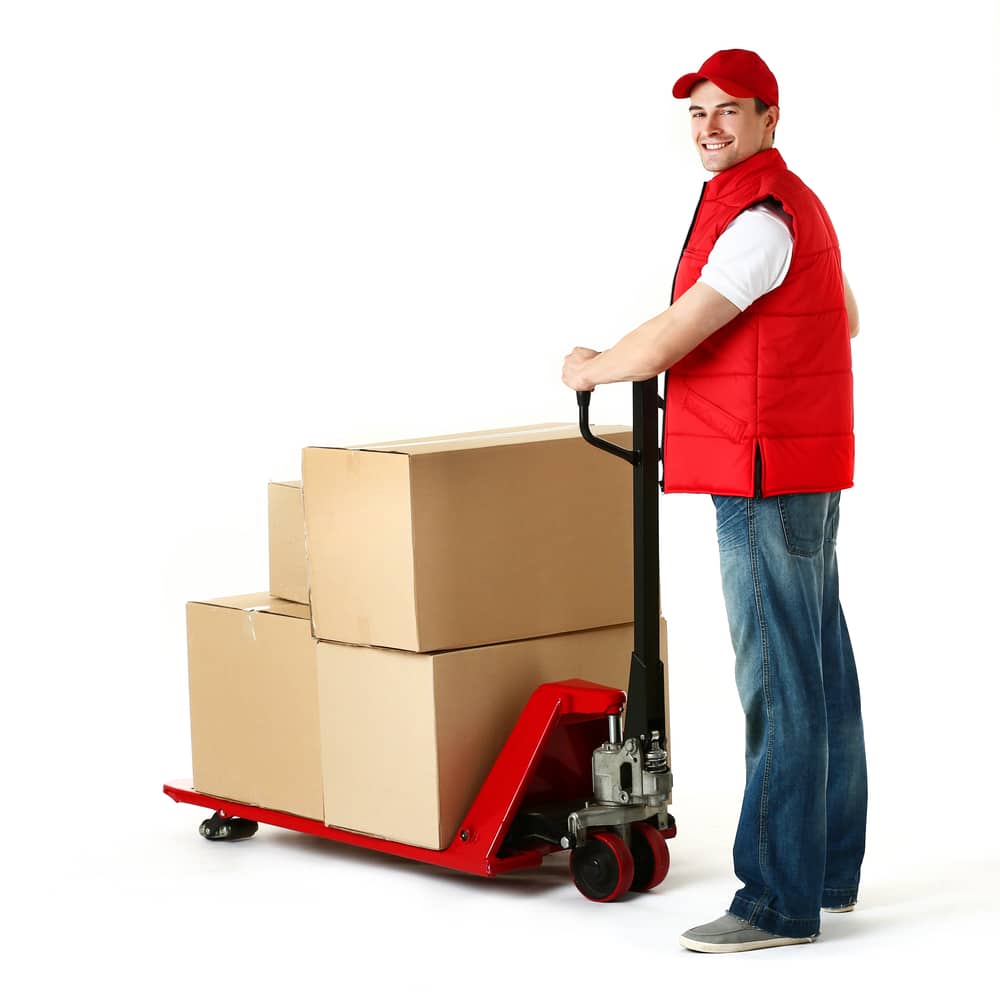Fundamentals of Safe Material Handling Practices

In the manufacturing industry, there are many moving parts to keep track of, and business owners need to juggle a lot of different aspects of production and warehouse management.
But above everything else, the number one concern of any warehouse owner or business proprietor in the manufacturing and production industry should be material handling.
How inventory is dealt with within a warehouse greatly impacts efficiency, revenue, the security of goods and raw materials, and the well-being of employees. As worker safety should be the top priority for any employer, this should be taken very seriously.
So, what is the key to proper material handling? How can inventory, equipment, and finished goods be moved about in a way that both prioritizes the safety of everyone involved and maintains maximum efficiency to protect revenue?
Above all, what is the best way to properly handle materials?
Also, we have specific training available if you need to train your staff on materials handling.
Foundational Material Handling Best Practices
Material movement throughout a factory and the handling of goods and equipment at various stages of production is a complicated and intricate process. With so many moving parts to keep track of, there is no one true material handling solution.
However, by implementing these ten simple best practices in your working environment, you can create an economically efficient and safe system for workers.

Plan Out the Material Handling Process in Detail
Do not take a haphazard, inconsistent approach to the material handling process. Instead, plan it out in meticulous detail, considering all of the possible factors. It is best to use a team approach here, consulting all departments involved so that no problem areas are overlooked.
By working out the logistics of the material handling process in advance, you can make things easier for everyone and ensure that no items are lost or damaged as they are moved about the factory or distribution center.
Plus, having a detailed plan in place can speed up production, which is a win for company owners and consumers alike.
Standardize Material Handling Equipment for the Entire Company
Keeping things consistent across your enterprise is the key to success in the material handling industry. This means ensuring everything is the same throughout your material handling system.
Storage equipment, such as containers, bins, and pallets, should all be kept to a standard size to ensure efficient use of materials. Hand trucks and other equipment used in manual handling, like pallet jacks, should be kept consistent throughout the working environment for the same reason.
Keeping all forms of material handling equipment standardized helps to cut down on training and reduce workplace accidents. This applies to securing devices, manually operated order pickers, and even large-scale industrial trucks.
In addition to equipment, safety precautions must also be consistently designed and enforced. All employees must undergo a standardized safety training procedure so that everyone knows how best to protect themselves and keep the environment secure.
Any protective gear, such as safety glasses, must be made uniform and comply with OSHA’s regulatory PPE standards. If you want information on choosing the right PPE for material handling tasks, we have an article that discusses that as well.

Consider Material Handling Systems Holistically
When developing a material handling system, it’s important to consider the entire unit as one entity rather than treating each constituent part independently. This is vital to maintaining your factory’s status as a productive supply chain member.
This entails working out the logistics of how each part supports each other. For instance, efficient space utilization is key. Don’t waste any available space if it can be used to support the system. If overhead space is available above another piece of equipment, use it as storage if it is safe.
Additionally, plan the layout of your space so that the flow of materials makes sense and preserves the safety of employees. Never add a new component without considering how it will affect the existing environment.
Be Considerate of the Environment
Material handling and other industrial processes can certainly take a toll on the planet. But it’s not difficult to introduce more sustainable practices to your material handling facility, and doing so openly can even improve customer satisfaction as more and more consumers join the environmental movement.

Prioritize Employee Health Through Ergonomics
The highest priority in your material handling operation has to be the protection of your employees. One way to achieve this is by incorporating ergonomic principles into your materials handling standard processes.
Take control of the workflow and have employees rotate tasks. Avoid processes that involve repetitive movement. Carefully control the load size for any material requiring manual movement not to overburden any worker.
Use a team approach in your workflow redesigning process to ensure no details are overlooked and guarantee the protection of your employees.
Use Automated Material Handling Equipment
Two main types of handling equipment are used within material handling systems: automated and manual. To ensure that the supply chain remains as productive as possible, it is in your best interest to invest in automated equipment to speed up key processes.
Switching to semi-automated equipment will help you reduce manual labor on the part of your team. This decrease in manual labor also eliminates a certain amount of human error, increasing accuracy in performance and thereby reducing material damage on the warehouse floor. It can even help improve customer service by freeing up members of your workforce to perform client-facing tasks.
Many different types of automated and semi-automated equipment can be used for handling materials. Conveyor systems will help transport materials around the facility without the need for employee intervention.
Side loaders can help lift heavy loads, further protecting the safety of employees who would otherwise have to carry them manually. Automated storage equipment can independently stow away containers in available overhead space compartments.
Any system you have in place can be improved upon with the addition of some semi-automated equipment.

Move Items in Bulk
If your employees moved individual items one at a time throughout your facility, you would surely be the weakest link in the supply chain. Moving lots of materials in a single load is a much more efficient material handling system.
The larger the unit load you can work with, the more materials you can move at a time, and the more efficient your operation will be.
You can control the size of your unit load by using larger and sturdier containers so as to fit more materials inside. Larger pallets will be able to accommodate a greater load size as well.
Think Critically About the Cost
Material handling is costly, but keeping the processes safe requires some investing.
When considering handling costs, focus on the life cycle costs of material handling tools rather than up-front purchase totals.
This will help you save money in the long run while ensuring safe and efficient processes throughout your material handling facility.
Stay Organized
Organization is the key to success in any endeavor. With a structured and transparent outlook, you can easily control every part of your facility.
Keep it Simple
Don’t overcomplicate your material handling practice. Eliminate redundant processes and free up employees to improve customer service. Avoid unnecessary movement and keep the flow of goods moving in one direction.
Why is Safe Material Handling So Important?
From a purely commercial perspective, implementing secure and conscientious material handling processes in the workplace is important because it saves you money.
Improving the efficiency of material movement within the factories ensures that as much product is moved as possible while reducing inventory losses from accidental mishaps.
While it’s great to prevent accidents that damage products and reduce inventory, it is a duty incumbent upon you as an employer to protect your workers from harm. Prioritizing safety will, in turn, save you on costs associated with workers’ compensation, paid sick leave, and hiring temporary labor. Finally, OSHA does require your company to perform materials handling processes safely.

What are the Risks of Poor Material Handling Practices?
Material handling operations that disregard worker safety in favor of superficially reducing handling costs take on a great deal of risk in exchange.
Of course, there is the obvious potential of bodily harm to employees. In addition to the immense toll this takes on injured laborers, it will also cost factory owners in the form of paid leave and workers’ compensation.
Additionally, without meticulously regulated and standardized material handling processes in place, materials are far more likely to be damaged on the floor. This will reduce inventory at a loss for the company, as it takes away from the amount of finished products that can be sold to consumers.
Is Safe Material Handling More Expensive?
Some factory operators may think that investing in solutions such as automated material-handling equipment and other tools designed to make processes run more efficiently and improve working conditions are too expensive and beyond the scope of their budgets.
However, by taking the cheaper route upfront and sacrificing employee safety and efficient use of material handling systems, you’re likely to incur even greater costs.
Rather than deal with the headache of spending large sums to replace damaged items, compensate injured employees, and repair mediocre equipment, it would be better to accept the up-front costs of investing in an efficient system that will save you money in the long run.
Nothing is More Important Than the Safety of Workers
As a factory owner or entrepreneur, your greatest concern is likely maintaining production efficiency, protecting your inventory and investments, and generating as much revenue as possible. But without a healthy and protected workforce, you’ll have nothing to produce income.
The welfare and security of the workers under your care must always be your top priority, and implementing safety-conscious material handling processes is one of the best ways to create a sound and secure working environment.